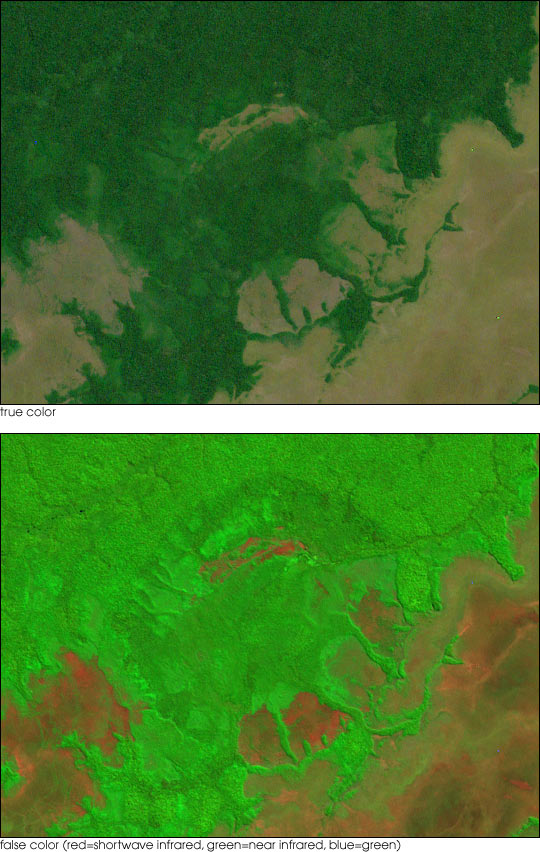


large images:
true color
false color
NASA scientists will venture into an isolated part of the Bolivian Amazon to try and uncover the origin of a 5 mile (8 kilometer) diameter crater there known as the Iturralde Crater. Traveling to this inhospitable forest setting, the Iturralde Crater Expedition 2002 will seek to determine if the unusual circular crater was created by a meteor or comet.
The team intends to collect and analyze rocks and soil, look for glass particles that develop from meteor impacts and study magnetic properties in the area to determine if the Iturralde site, discovered in the mid-1980s with satellite imagery, was indeed created by a meteor.
If a meteorite is responsible for the impression, rocks in the area will have shock features that do not develop under normal geological circumstances. The team will also look for glass particles, which develop from the high temperatures of impact.
The Iturralde Crater Expedition 2002 team will extensively analyze soil in the impact zone for confirmation of an impact. One unique aspect of the Iturralde site is the 4-5 km deep surface sediment above the bedrock. Thus the impact was more of a gigantic “splat” rather than a collision into bedrock.
The large crater is only 1 meter lower in elevation than the surrounding area. Water collects within the depression, but not on the rim of the crater, which is slightly higher than both the surrounding landscape and the interior of the crater. These subtle differences in drainage are reflected in the forest and grassland habitats that developed on the landscape. It is precisely these differences in the vegetation structure that can be observed from space and which led to the identification of the Iturralde Crater from Landsat Images.
Compare these images with topographic data from the Shuttle Radar Topography Mission.
For more information, visit NASA Scientists Determined to Unearth Origin of the Iturralde Crater and Iturralde Crater Expedition 2002
Images by Robert Simmon, based on data from the Landsat 7 Science Team and the Global Land Cover Facility